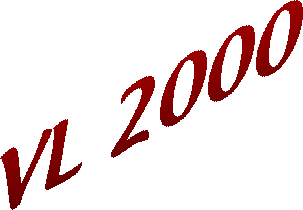
Seattle, Washington
September 10-14, 2000

|
IEEE Symposium
on Visual Languages
Seattle, Washington September 10-14, 2000 |

If you want to design a new visual or textual programming language for people who are not professional programmers, how do you answer basic design decisions? Most existing languages are based on the intuitions of the designers, along with technical considerations such as ease of compilation and provability. In contrast, we are performing human-factors experiments on basic design issues of programming languages, in order to provide a more scientific basis for making design decisions. We are also adapting the techniques and principles of human-computer interface design to the design of new languages. We hope the result will be general principles, methods, programming language designs and environments that will significantly reduce the amount of learning and effort needed to write programs.
 Brad Myers is a Senior Research Scientist in the Human-Computer
Interaction Institute in the School of Computer Science at Carnegie
Mellon University, where he is the principal investigator for various
projects, including User Interface Software, Demonstrational
Interfaces, Natural Programming, and the Pebbles PalmPilot Project.
Brad Myers is a Senior Research Scientist in the Human-Computer
Interaction Institute in the School of Computer Science at Carnegie
Mellon University, where he is the principal investigator for various
projects, including User Interface Software, Demonstrational
Interfaces, Natural Programming, and the Pebbles PalmPilot Project.
He is the author or editor of over 180 publications, including "Creating User Interfaces by Demonstration" and "Languages for Developing User Interfaces," and he is on the editorial board of five journals, including the Journal of Visual Languages and Computing. His research interests include User Interface Development Systems, user interfaces, Programming by Example, programming languages for kids, Visual Programming, interaction techniques, window management, and programming environments. He belongs to SIGCHI, ACM, IEEE Computer Society, IEEE, and Computer Professionals for Social Responsibility.

Back to the VL 2000 homepage.